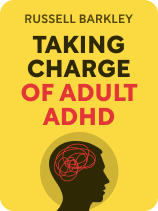

This article is an excerpt from the Shortform book guide to "Taking Charge of Adult ADHD" by Russell Barkley. Shortform has the world's best summaries and analyses of books you should be reading.
Like this article? Sign up for a free trial here.
Are you someone with ADHD who has trouble staying motivated? How can you rewire your brain to find more motivation?
Not being able to envision the future creates real problems for people with ADHD, especially when it comes to motivation and problem-solving. Planning for the future requires activating the higher functions of the brain that ADHD normally suppresses.
Let’s look at how to get motivated with ADHD.
Motivation and Problem-Solving
Tricks to learn how to get motivated with ADHD include visualizing positive outcomes, breaking tasks down into manageable chunks, and involving all of your senses in problem-solving, not just trying to work from pure imagination.
(Shortform note: One important higher function that Barkley doesn’t name is prospective memory, which lets you remember intentions or actions planned for the future. Prospective memory is essential for remembering to take medication, make a phone call, or run errands. This type of memory arises from brain regions involved in self-monitoring and spontaneous recall. Studies show that impaired prospective memory not only interferes with planning for the future, but is also a cause of procrastination.)
The trouble with trying to change your behavior is that it takes time to see any results, and as a person with ADHD, you may grow impatient with your progress or worse—you might start to beat yourself up for not being able to see results fast enough. This is why Barkley says it’s important to imagine the positive consequences that will result from engaging in productive behaviors. This can help generate uplifting emotions that motivate you to take the necessary steps to achieve your goals.
(Shortform note: Barkley’s directive to stay positive goes along with the majority of self-help advice, but according to Oliver Burkeman, this widely accepted belief has downsides. In The Antidote, Burkeman explains that attempting to think only positive thoughts can heighten negative emotions by requiring you to suppress and ignore them, rather than address what you’re feeling. When negative thoughts inevitably surface, you may assume that your emotional distress is your fault for not being positive enough. Burkeman states that instead of striving for constant positivity, you should embrace life’s uncertainty and imperfections—which would include embracing your ADHD, something Barkley also recommends, as we’ll see.)
This advice doesn’t only apply to managing your ADHD, but also to achieving any of the goals that your ADHD symptoms may have hindered. For example, if you want to write a book but have trouble getting started, imagine how good it will feel to hold a published copy in your hand. Barkley writes that to amplify your positive emotions, you can use visual cues as reminders of how much you’ll enjoy achieving your goals, similar to the reminders you might use to keep yourself on track for your short-term tasks. For instance, if you aspire to run a marathon and need visual motivation to train, create a mockup of the medal you might win once you’ve finished the race.
(Shortform note: If you don’t find Barkley’s motivational reminders to be effective on their own, you may need to engage with your goals more directly. In The 10X Rule, Grant Cardone says that instead of leaving yourself reminders of your goals, you should write them down at least twice a day. This will help fix them more firmly in your mind. Cardone recommends writing them down when you wake up and when you go to bed, while feeling free to revise them as needed. Since ADHD might make this hard to remember, perhaps you can use a visual reminder to write your goals down, rather than to remind you of your goals themselves.)
1. Maintain Your Momentum
Once you’ve found a motivation that works, Barkley argues that you’ll find your ambitions easier to achieve if you do three things: First, divide your goals into smaller tasks, which will provide a structured approach that can help you not feel overwhelmed or frustrated. Second, report your progress to others, which creates accountability to help you stay committed and focused on your goal. Lastly, reward yourself for accomplishing each task to give yourself a sense of accomplishment that can fuel your motivation toward achieving your ultimate goal.
(Shortform note: The common belief about motivation is that it comes before you take action, but in The Motivation Myth, Jeff Haden argues that motivation is the result of success, not something you have before you get started. Haden agrees with all of Barkley’s advice, but he asserts that motivation is momentum, and that focusing on small tasks, staying accountable, and rewarding yourself all create a positive feedback loop that keeps your motivation going. If you experience hyperfocus as one of your ADHD symptoms, Haden’s suggestion of a day-long productivity marathon could harness your ADHD traits as a motivational strength.)
For example, if your goal is to write a book, commit to writing two pages a day, share your progress with a writing group, and each time you complete your daily two pages, enjoy a small treat. What’s important is that you don’t beat yourself up if these strategies don’t work every time. Achieving long-term goals is hard for anyone, but especially for those who have to simultaneously manage ADHD’s symptoms. However, Barkley says these tactics can give you a fighting chance to overcome the motivational hurdles that ADHD throws your way.
(Shortform note: Since emotional regulation is a challenge for people with ADHD, the type of self-care that Barkley recommends might be easier said than done. You may feel frustration and a sense of isolation, and you may be quick to criticize yourself due to perceived shortcomings. Nevertheless, the healthiest response is to approach such moments with warmth and understanding. Remind yourself that many others with ADHD face similar struggles. Mindfulness practices in particular can teach you to observe your thoughts and behaviors without judgment, promoting self-awareness and focus while helping you develop a more resilient mindset when facing setbacks.)
2. Engage Your Senses
What you may have noticed about Barkley’s self-management tips is that most of them externalize an internal mental process. Since ADHD weakens your ability to organize information in the mind, Barkley suggests that you engage with problems manually rather than mentally, using your senses of sight, touch, and hearing. For instance, to weigh the pros and cons of a decision, write them down on paper. Rather than trying to keep track of a series of instructions in your head, use a voice memo app to record them. When faced with a complex problem, draw a diagram or use sticky notes. “Thinking” with your hands, ears, and eyes lets you connect ideas and gain a clear understanding of the problem at hand.
(Shortform note: In the field of education, Barkley’s suggestion to tackle problems manually is referred to as kinesthetic learning. It encourages processing information through touch and movement, and is useful for people who prefer physical activity as a means to master new skills. Adults with ADHD can use kinesthetic learning by getting hands-on experience, taking part in interactive role-playing, and learning from game-like simulations. Not only does kinesthetic learning improve retention, it increases your muscle memory for hands-on tasks and has been shown to boost problem-solving and self-confidence. Some careers, especially those which combine physical and mental activity, are well-suited for kinesthetic learners.)
3. Accept Your ADHD
No matter what medications and lifestyle strategies you find useful, Barkley is adamant that to truly manage your ADHD, rather than letting it manage you, is to accept that your ADHD is part of who you are as a person. This doesn’t mean you should accept it as a gift, but neither should you ever feel ashamed about your diagnosis. If you acknowledge it as one of your imperfections, of which we all have many, then you’ll be able to work with your condition, rather than wasting fruitless time working against it.
(Shortform note: Avoiding shame is the key benefit Barkley stresses from accepting ADHD. In The Gifts of Imperfection, Brené Brown defines shame as the feeling that you don’t deserve to be loved because you’ll never be “good enough.” The counter to shame is feeling worthiness, the conviction that you are good enough as you are, flaws and all. Brown’s recipe for learning resilience against shame includes being and accepting your true, authentic self and refusing to compare yourself to others. This advice can be hard to follow if you’re used to feelings of inadequacy for being neurodivergent, but Brown insists that accepting who you are as a person will help you develop a sense of inner strength and resilience against future feelings of shame.)
Barkley says you might find it helpful to approach your ADHD with a sense of humor. Though this, like any other strategy, may not work for everyone, being able to laugh at your struggles can help you maintain a positive attitude as you navigate the challenges arising from your symptoms. If you can face difficulties related to ADHD and are able to find humor in the situation, you’ll avoid fixating on your mistakes, being self-critical, and becoming mired in negative self-judgment. Ultimately, this approach can empower you to maintain resilience and focus on moving forward
(Shortform note: In saying you can face your ADHD with humor, Barkley isn’t suggesting that you should see your condition as funny—rather, that you can reframe your struggles in a way that can make living with them easier. Though Barkley doesn’t draw the connection himself, some of his advice about adopting a helpful mindset is in line with classic Stoic philosophy. In The Stoic Challenge, William B. Irvine explains that when encountering problems—such as those of living with ADHD—you can frame them as opportunities to practice resilience, resolve, courage… and humor. This lets you maintain emotional equilibrium by choosing to respond rather than to react, so you can face ADHD’s challenges on your own terms.)

———End of Preview———
Like what you just read? Read the rest of the world's best book summary and analysis of Russell Barkley's "Taking Charge of Adult ADHD" at Shortform.
Here's what you'll find in our full Taking Charge of Adult ADHD summary:
- The various treatment options for ADHD in adults
- How to accept ADHD as a part of your life
- What ADHD can look like in undiagnosed adults






